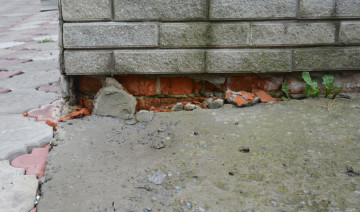
Retrofitting Foundation Footings: A Step-by-Step Guide
Foundation footings serve as the bedrock of a home, providing essential support and stability. However, over time, factors such as soil settlement, moisture levels, and structural changes can compromise the integrity of foundation footings, leading to issues like settling or cracking. Retrofitting foundation footings is a proactive measure that can strengthen and stabilize the foundation, safeguarding your home against potential damage. In this blog post, we'll provide homeowners with a comprehensive guide on how to retrofit foundation footings, ensuring the longevity and resilience of their homes for years to come.
1. Assess the Current Condition:
Before proceeding with any retrofitting efforts, it's essential to assess the current condition of your foundation footings. Look for signs of settling, cracking, or deterioration, both on the interior and exterior of your home. Consider hiring a professional foundation inspector to conduct a thorough evaluation and provide recommendations for retrofitting solutions.
2. Identify the Retrofitting Method:
Based on the assessment findings, determine the most suitable retrofitting method for your foundation footings. Common retrofitting techniques include underpinning, which involves strengthening existing footings by extending them deeper into the soil, and adding supplementary support such as concrete piers or helical piles.
3. Obtain Necessary Permits:
Before commencing any retrofitting work, check with your local building department to determine if permits are required for the project. Obtain the necessary permits and ensure compliance with local building codes and regulations to avoid any potential legal issues down the line.
4. Prepare the Work Area:
Clear the area around the foundation footings of any obstructions and debris. Take precautions to protect landscaping, utilities, and nearby structures from potential damage during the retrofitting process. Use caution when excavating near existing footings to prevent undermining their integrity.
5. Excavate Around the Footings:
Using excavation equipment such as a mini excavator or backhoe, carefully excavate around the existing foundation footings to expose them fully. Take care to maintain a safe distance from the footings to prevent accidental damage.
6. Install Supplementary Support:
Once the footings are exposed, proceed with installing supplementary support as per the chosen retrofitting method. This may involve installing concrete piers, helical piles, or other support systems to reinforce the existing footings and distribute the weight of the structure more evenly.
7. Pour Additional Concrete:
If underpinning is part of the retrofitting plan, pour additional concrete to extend the depth of the existing footings. Ensure that the new concrete is properly reinforced with rebar and meets the required strength and structural specifications.
8. Backfill and Compact Soil:
After the retrofitting work is completed, backfill the excavated area around the footings with soil, taking care to compact it thoroughly to prevent settling. Gradually build up the soil in layers, compacting each layer to achieve optimal density.
9. Monitor and Maintain:
Once the retrofitting process is finished, monitor the foundation footings regularly for signs of settling or other issues. Keep an eye out for cracks, moisture intrusion, or uneven settling, and address any concerns promptly to prevent further damage.
Conclusion:
Retrofitting foundation footings is a proactive measure that can enhance the stability and longevity of your home's foundation. By following this step-by-step guide, homeowners can retrofit their foundation footings effectively, ensuring the structural integrity of their homes for years to come. Remember to consult with professionals and obtain necessary permits before starting any retrofitting work, and prioritize regular maintenance to keep your foundation in optimal condition. With proper care and attention, you can safeguard your home against potential foundation issues and enjoy peace of mind knowing that your home is built on a solid foundation.
